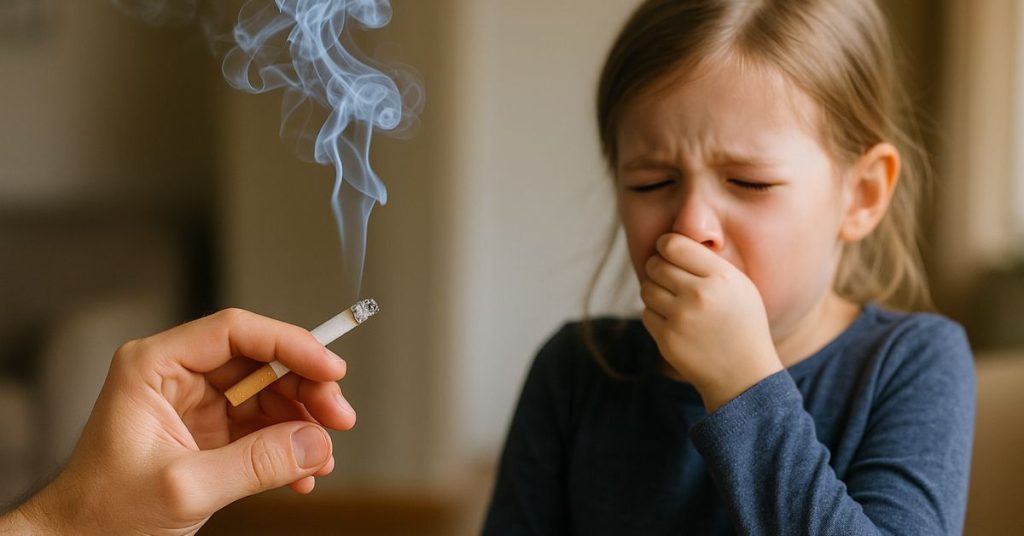Indoor air pollution triggers allergies by releasing allergens like dust mites, mold spores, and pet dander, which irritate the respiratory system and immune response, causing symptoms such as sneezing, coughing, and congestion.
Key Takeaways:
- Indoor air pollution contains common allergens.
- Allergens irritate respiratory and immune systems.
- Exposure leads to allergy symptoms like sneezing and congestion.
- Reducing indoor pollutants can help manage allergies.
Indoor environments are often considered safe, yet indoor air pollution can pose serious health threats, especially for those who suffer from allergies. The air we breathe at home, in offices, or enclosed spaces can contain pollutants and allergens that trigger reactions ranging from mild discomfort to severe respiratory issues. Understanding the connection between indoor air quality and allergies is crucial for creating healthier living spaces.
What Is Indoor Air Pollution?
Indoor air pollution refers to the presence of harmful substances in the air inside homes, offices, and buildings. These pollutants can be biological, chemical, or particulate matter that enter the respiratory system and provoke immune responses. Unlike outdoor air pollution, which is visible and often discussed, indoor pollutants are more insidious, building up silently in confined spaces where ventilation is limited. For a deeper understanding of what constitutes indoor air pollutants, the EPA provides a comprehensive overview of indoor air quality, including sources, health effects, and solutions.
Common Sources of Indoor Air Pollution
- Dust and dust mites: Microscopic insects thrive in carpets, mattresses, and upholstery.
- Pet dander: Tiny skin flakes and saliva proteins from cats and dogs are strong allergens.
- Mold and mildew spores: Often caused by dampness, these fungi release allergens into the air.
- Pollen particles: Outdoor pollen sneaks indoors through open windows, shoes, and clothing.
- Volatile Organic Compounds (VOCs): Released from cleaning products, paints, and furniture.
- Smoke and combustion byproducts: From tobacco, candles, fireplaces, or cooking.
These pollutants accumulate and recirculate, creating an environment where allergic triggers are continuously present.
How Indoor Air Pollution Affects Allergies

The human body reacts to allergens through an immune system response. When exposed to pollutants, the immune system mistakenly identifies them as harmful, releasing chemicals like histamines. This response leads to symptoms such as sneezing, runny nose, watery eyes, coughing, and in some cases, asthma flare-ups.
The CDC emphasizes that key allergy and asthma triggers include dust mites, pet dander, mold, and secondhand smoke. They recommend proactive trigger control as part of effective asthma management
Immediate Allergy Symptoms
- Sneezing and nasal congestion
- Itchy or watery eyes
- Throat irritation
- Skin rashes or eczema flare-ups
Long-Term Impacts
Chronic exposure to indoor air pollution can worsen existing respiratory conditions. Over time, it may cause:
- Asthma attacks in sensitive individuals
- Increased risk of chronic sinusitis
- Greater susceptibility to respiratory infections
- Sleep disruptions due to congestion and breathing difficulties
The Role of Dust and Dust Mites
One of the most common indoor allergens is dust, particularly dust mites. These microscopic creatures feed on dead skin cells and thrive in warm, humid environments. Their waste particles become airborne and are inhaled, causing allergic reactions. Studies show that dust mite exposure is directly linked to asthma and persistent allergic rhinitis.
How to Reduce Dust Mite Exposure
- Wash bedding weekly in hot water
- Use allergen-proof pillow and mattress covers
- Keep humidity levels below 50%
- Vacuum carpets and upholstery with HEPA-filter vacuums
Pet Dander and Allergic Reactions
For animal lovers, pets bring joy but also potential allergy triggers. Pet dander is lightweight and sticky, clinging to furniture, clothing, and walls. Even homes without pets can contain dander from visitors or previous residents.
Symptoms Triggered by Pet Allergens
- Sneezing and nasal congestion
- Shortness of breath
- Skin redness or hives
- Asthma flare-ups
Minimizing Pet-Related Allergies
- Bathe pets regularly
- Restrict pets from bedrooms
- Use air purifiers with HEPA filters
- Clean surfaces and vacuum frequently
Mold, Mildew, and Their Allergic Impact
Mold spores thrive in damp areas such as bathrooms, basements, and kitchens. When inhaled, these spores can cause significant allergic reactions, especially in individuals with compromised immune systems. Mold exposure may lead to chronic coughing, wheezing, and skin irritation.
Preventing Mold Growth
- Fix leaks promptly
- Use dehumidifiers in damp areas
- Ensure proper ventilation in bathrooms and kitchens
- Clean mold-prone areas with antimicrobial solutions
Volatile Organic Compounds (VOCs) and Allergy Triggers
VOCs are chemicals released from products like paints, solvents, cleaning supplies, and new furniture. These compounds can irritate the respiratory tract, even in people without allergies. For those prone to allergies, VOC exposure intensifies symptoms such as headaches, dizziness, and airway inflammation.
Mold, Mildew, and Their Allergic Impact
How to Limit VOC Exposure
- Choose low-VOC paints and furnishings
- Store cleaning supplies securely and ventilate while using them
- Increase indoor ventilation during renovations
- Use natural or eco-friendly cleaning products
Tobacco Smoke and Indoor Allergies
Secondhand smoke contains thousands of chemicals, many of which are potent irritants and allergens. Children exposed to tobacco smoke indoors are at higher risk of developing allergic rhinitis and asthma. Smoke particles settle on furniture and fabrics, prolonging exposure even after smoking stops.
Solutions to Smoke Pollution
- Enforce a smoke-free home policy: Completely ban smoking indoors to prevent the introduction of harmful chemicals and allergens.
- Wash curtains, upholstery, and walls exposed to smoke: Thorough cleaning removes settled smoke particles and reduces prolonged exposure.
- Use air purifiers designed to remove smoke particles: High-efficiency particulate air (HEPA) filters and activated carbon purifiers help capture and neutralize smoke pollutants.
- Ventilate the home regularly by opening windows and using exhaust fans: Proper airflow helps to disperse indoor smoke and improve air quality.
- Replace HVAC filters frequently to reduce smoke residue: Dirty filters can recirculate smoke particles; regular replacement maintains cleaner indoor air.
- Avoid smoking near children and vulnerable individuals: Smoke exposure is especially harmful to children, elderly, and those with respiratory conditions.
- Use activated charcoal or baking soda to absorb lingering odors and toxins: These natural absorbers help reduce residual smoke smell and chemicals on surfaces.
Deep clean carpets and soft furnishings or consider replacing heavily contaminated items: Smoke particles can embed deeply, so professional cleaning or replacement may be necessary to fully remove pollutants.

Improving Indoor Air Quality to Prevent Allergies
Enhancing indoor air quality is essential for reducing allergy risks. Practical steps can drastically minimize exposure to harmful pollutants.
Best Practices for Cleaner Indoor Air
- Regular Ventilation – Open windows when outdoor air quality is good.
- Air Purifiers – Use devices with HEPA filters to trap allergens.
- Humidity Control – Maintain indoor humidity between 30–50%.
- Frequent Cleaning – Dust, vacuum, and wash linens often.
- Green Choices – Opt for eco-friendly, non-toxic cleaning and household products.
- Indoor Plants – Certain plants help absorb toxins, though caution is needed as some can cause allergies themselves.
When to Seek Professional Help
If indoor allergies continue despite regular cleaning and preventive steps, it may be time to seek professional help. Services like HVAC maintenance, duct system condition evaluation and inspection, and mold remediation can greatly enhance indoor air quality by removing allergens hidden in vents, ducts, or damp areas. An allergy specialist can also perform testing to identify specific triggers, allowing for customized solutions. These professional interventions often make a significant difference when routine efforts aren’t enough to relieve allergy symptoms.
Who to Call for Expert Indoor Air Quality Solutions
When regular cleaning and home remedies aren’t enough, it’s time to call in the experts. For professional air duct and dryer vent cleaning, air scrubber installation, and HVAC services, 5 Star Air is the trusted name to rely on. Our certified technicians are equipped to improve your indoor environment by removing hidden allergens and boosting air quality efficiently and safely.
Don’t let poor air quality continue to affect your health and comfort. Contact us today to schedule an in-home evaluation and take the first step toward a cleaner, healthier home.
Conclusion
Indoor air pollution is a hidden threat that can significantly worsen allergy symptoms and respiratory health. From dust mites and pet dander to mold and smoke, these indoor pollutants silently accumulate and compromise the air we breathe daily. While routine cleaning helps, deeper solutions like air duct cleaning are essential for tackling allergens that lurk in unseen places like vents and HVAC systems.
Investing in air quality improvements is more than just a comfort upgrade—it’s a health decision. Don’t wait for symptoms to escalate. Take proactive steps today to ensure your indoor spaces remain safe, clean, and allergy-friendly.
